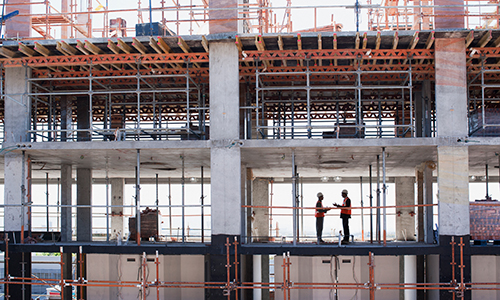“$39M in damages after five alarm fire destroys college park building under construction.” During this emergency in College Park, MD the fire chief noted that the sprinkler system was not functional due the building being under construction. Firefighters were on scene throughout the afternoon and evening batting the fire and ensuring the safety of civilians and residents.
This event is unfortunately not unique. Statistics from NFPA 2017 noted 3,820 construction site fires took place each year from 2011 – 2015. On a college campus or hospital complex inhabited by civilians during active construction, this risk is paramount. Heaters, welding, grinding and accumulated construction materials and cardboard can create an extremely dangerous and life-threatening situation for construction workers, building inhabitants and civilians.
So what is being done to mitigate this risk? NFPA 241 exists to safeguard us against construction dangers. The standard states that contractors are responsible for keeping a building up to code throughout the life of the building permit. They are responsible for having a program in place which showcases their life safety measures, and must have these measures in place to secure their building permit. Many are unaware of this code, and it is up to the AHJ or building inspector to ensure a facility not only meets the requirement when they file for approval, but keep these safety measures in place throughout the life of their project. The designation of a Fire Protection Program Manager, an on-site resource charged with reviewing the fire protection plan and ensuring compliance each day, is critical to the effectiveness of these plans.
Go Wireless and Remove Risk
Ensuring protection at a live construction site does not have to be difficult, costly or time consuming. Wireless detection systems, such as SWIFT Wireless, are designed to fit these applications. Whether you need to protect a new hospital annex, are retrofitting an existing building, or are building a new facility on a college campus, integrated wireless detection is available to protect people and property. Wireless devices can seamlessly integrate through a wireless gateway that is tied to the existing fire and life safety panel, such as NOTIFIER ONYXWorks® panels. These devices run off battery power, and use a wireless mesh to remain continually connected to the fire panel, providing temporary fire and life safety detection within the construction spaces.
Protection as Construction Progresses
Protecting an active construction site can be a complicated, and requires a bit of creativity when deciding upon how to protect a facility at every stage of construction. In order to fully understand the risks and protection measures required engineers, contractors and AHJ’s should all be educated on NFPA 241, and be vigilant in keeping a job site properly protected as construction progresses. Wireless technology that integrates with wired devices and panels is a flexible solution to keep a site protected from project inception through completion.
Learn more about the innovative technology protecting jobsites at all stages of construction.













